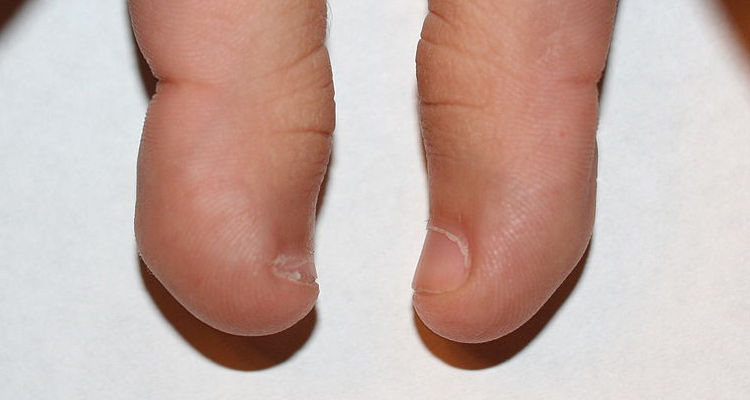
Thumbs are funny things. They are much stronger than the others and are offset from the rest of our fingers- so set off in fact that some people don’t even consider them to be fingers. Our thumbs are essential to the everyday living of most people. They transform what would otherwise be an elongated paw into a sophisticated and extremely nimble adaptation for manipulating the world around us.
Among the top three physical adaptations of which humans are so proud, thumbs might easily rank third place behind the mammalian neocortex and the erect spine. Not bad for something so small.
But as funny and odd as thumbs are- some people’s thumbs are even odder, with one bearing a strikingly different appearance to the other. If you fall into this category, chances are other children at school made you acutely aware of the fact that your thumbs are not even, and that one is a rather strange and stumpy-looking chubby thumb. It is probably not any less useful than the other. Nevertheless, someone with such a thumb would likely have spent a lot of time wondering, ‘why are my thumbs uneven.’
What we’re talking about is an unusual condition where one thumb is broader between the tip and last knuckle than the other thumb. It may appear bulbous or flat- a bit like the fingertips of a tree frog. The nail is typically very short and wide, being about three to four times as wide as it is long. More often than not, the other thumb will appear more normal.
Factors Affecting Thumb Size
Also known as potters thumb, bohemian thumb, trolls thumb, murderer’s thumb, royal thumb, hitchhiker’s thumb, dinosaur thumb, hammer thumb, money counter’s thumb, and a number of other less pleasant names- this odd trait is known to science as brachydactyly thumb or type D thumb. It is a genetic trait that occurs in about 2% of the population.
Brachydactyly is a heritable trait that can affect any of the digits of the hands or feet. It is usually benign and does not cause insurmountable problems with dexterity or barriers to everyday living. If you have one stubby thumb, chances are good that one or more of your family members have it too.
It is defined as a genetic condition that shortens the phalanges bones of the fingers and toes. It can be associated with Down syndrome or Cushing’s syndrome, however, just because you have one thumb that is notably different to the other one does not mean you have either of those genetic conditions.
More often than not a brachydactyly thumb presents all on its own and does not accompany any other abnormality. It is a common feature of those who have the condition known as dwarfism- but for those with dwarfism- the thumbs are hardly the first thing to be noticed.
Interestingly, brachydactyly is not the only condition that causes the bones of the hands and fingers to take on an unusual appearance. There is, of course, the condition polydactyly. This is when there are more than five digits on one hand or foot. Like brachydactyly, it usually affects just one hand or the other. Finally, there is arachnodactyly. This is an even rarer condition where the bones of the fingers develop unusual length. The severity of all these conditions is typically mild- not causing any discomfort or disability. In most cases, they are only superficial differences that do not affect the function of the hand.
Even in cases where the condition might make using the hands more difficult- people are extremely good at learning to use their hands to perform any task that they put their minds to. In most cases, potter’s thumb is present from infancy. So those who have this condition feel it is normal for them, and are able to use their stubby thumbs as well as anyone else. Often times these folks don’t think anything of it until they enter school and other children take notice. This can be difficult, of course, because children in school are not always very nice.
Brachydactyly Thumb in History and Hollywood
Having appeared in writings as old as Shakespeare and older, potter’s thumb has often been wrongly associated with a predilection for murder, demon possession, and the like. But of course, it is just one of many natural conditions that help to make people different, unique, and special.
If you have a stumpy finger or toe, it might help to know that many celebrities also have this condition. The singer, Tyler Joseph; and actors Miles Teller, and Megan Fox all have clubbed thumbs- and it hasn’t held them back one bit.
